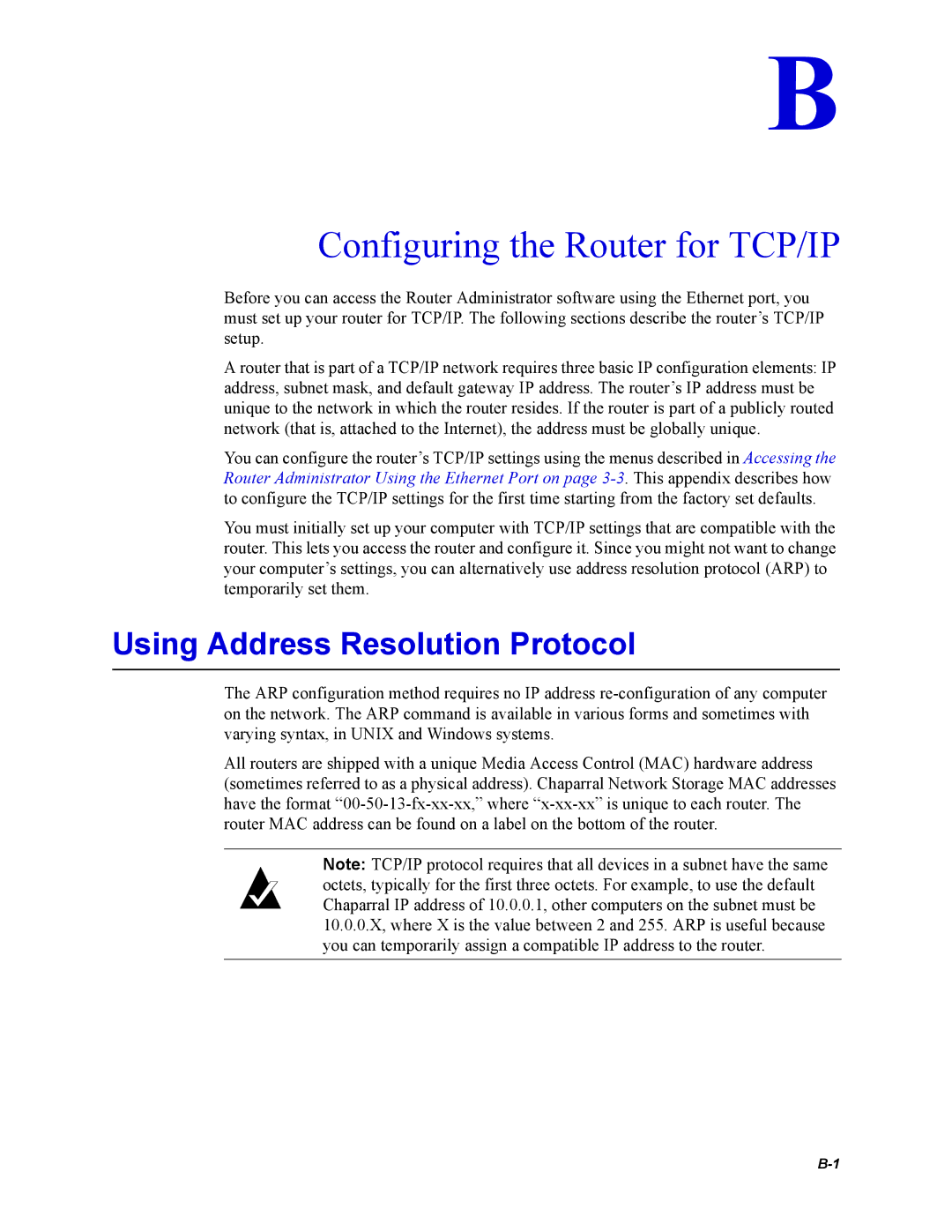
B
Configuring the Router for TCP/IP
Before you can access the Router Administrator software using the Ethernet port, you must set up your router for TCP/IP. The following sections describe the router’s TCP/IP setup.
A router that is part of a TCP/IP network requires three basic IP configuration elements: IP address, subnet mask, and default gateway IP address. The router’s IP address must be unique to the network in which the router resides. If the router is part of a publicly routed network (that is, attached to the Internet), the address must be globally unique.
You can configure the router’s TCP/IP settings using the menus described in Accessing the Router Administrator Using the Ethernet Port on page
You must initially set up your computer with TCP/IP settings that are compatible with the router. This lets you access the router and configure it. Since you might not want to change your computer’s settings, you can alternatively use address resolution protocol (ARP) to temporarily set them.
Using Address Resolution Protocol
The ARP configuration method requires no IP address
All routers are shipped with a unique Media Access Control (MAC) hardware address (sometimes referred to as a physical address). Chaparral Network Storage MAC addresses have the format
Note: TCP/IP protocol requires that all devices in a subnet have the same octets, typically for the first three octets. For example, to use the default Chaparral IP address of 10.0.0.1, other computers on the subnet must be 10.0.0.X, where X is the value between 2 and 255. ARP is useful because you can temporarily assign a compatible IP address to the router.
